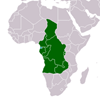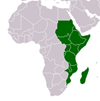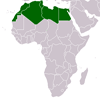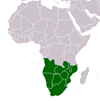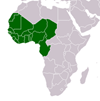Markedness and dominance in the ATR harmony system of Diola-Fogny
Markedness and dominance in the ATR harmony system of Diola-Fogny
Diola-Fogny is a well-known example of a tongue root harmony language with assimilatory dominance of [+ATR] vowels. Less well known, however, are some asymmetries involving the frequency and distribution of [+ATR] and [-ATR] vowels. In addition to being dominant, [+ATR] vowels are subject to restrictions on their occurrence in certain classes of function words and affixes and occur with far lower overall frequency than [-ATR] vowels. In essence, they pattern like a marked sound class. This paper focuses on some implications of these findings for a theoretical topic of interest: markedness relations involving tongue root features. The Diola-Fogny patterns conform quite well to the expectations of a traditional understanding of featural markedness, which equates the dominant value of a feature with the marked one. They are problematic, however, for a widely assumed view of tongue root markedness relations that treats [-ATR] as universally marked in high vowels. Under this view, marked patterning of all [+ATR] vowels (including high [+ATR] [i], [u]) is unexpected. I show that such patterning is intelligible in a framework in which markedness has a representational basis and in which [+ATR] quality is represented by a privative feature [ATR].
CITATION: Casali, Roderic F.. Markedness and dominance in the ATR harmony system of Diola-Fogny . : Walter De Gruyter , 2018. Journal of African Languages and Linguistics, Vol. 39, N0. 2, May 2018 pp. 201-240127-152 - Available at: https://library.au.int/markedness-and-dominance-atr-harmony-system-diola-fogny

